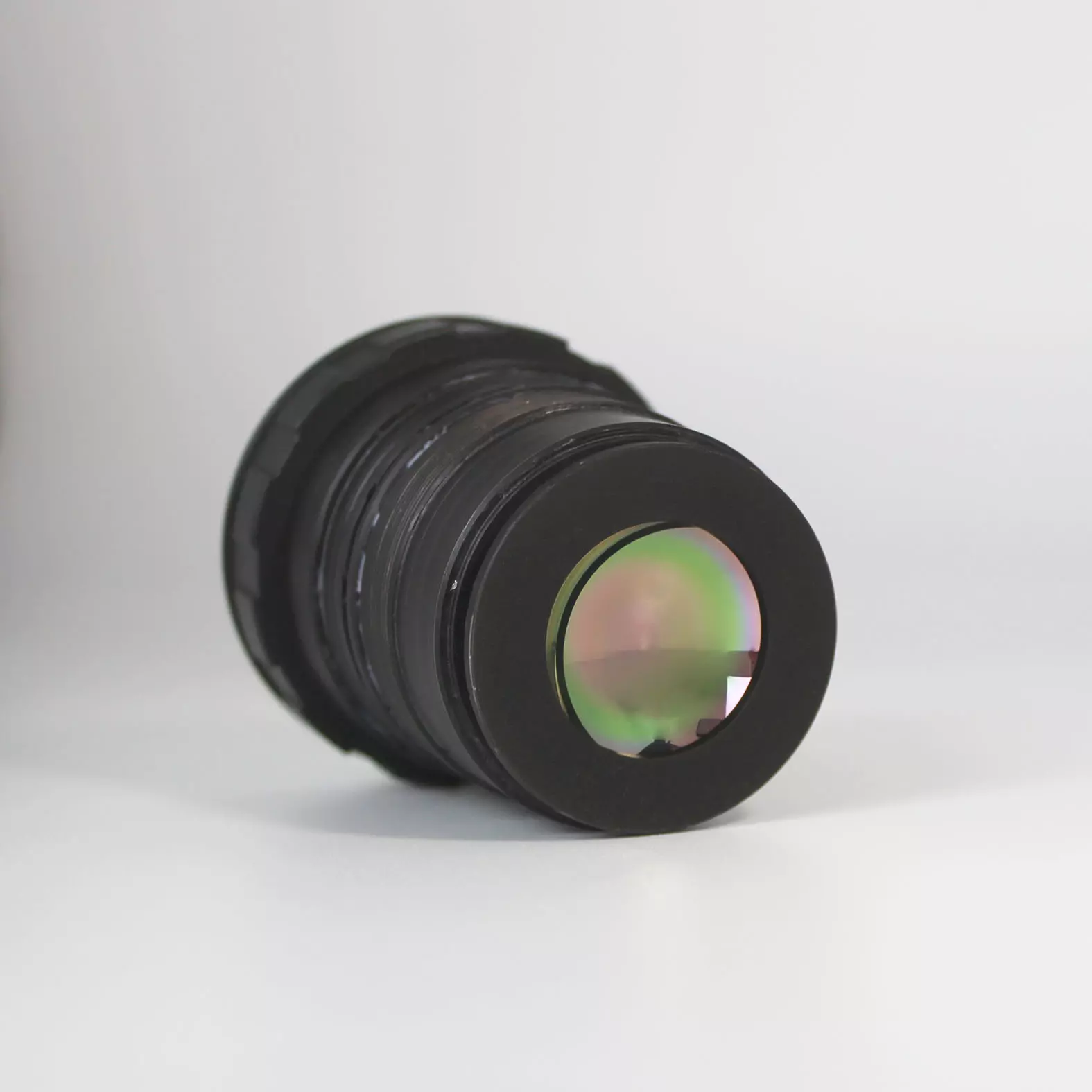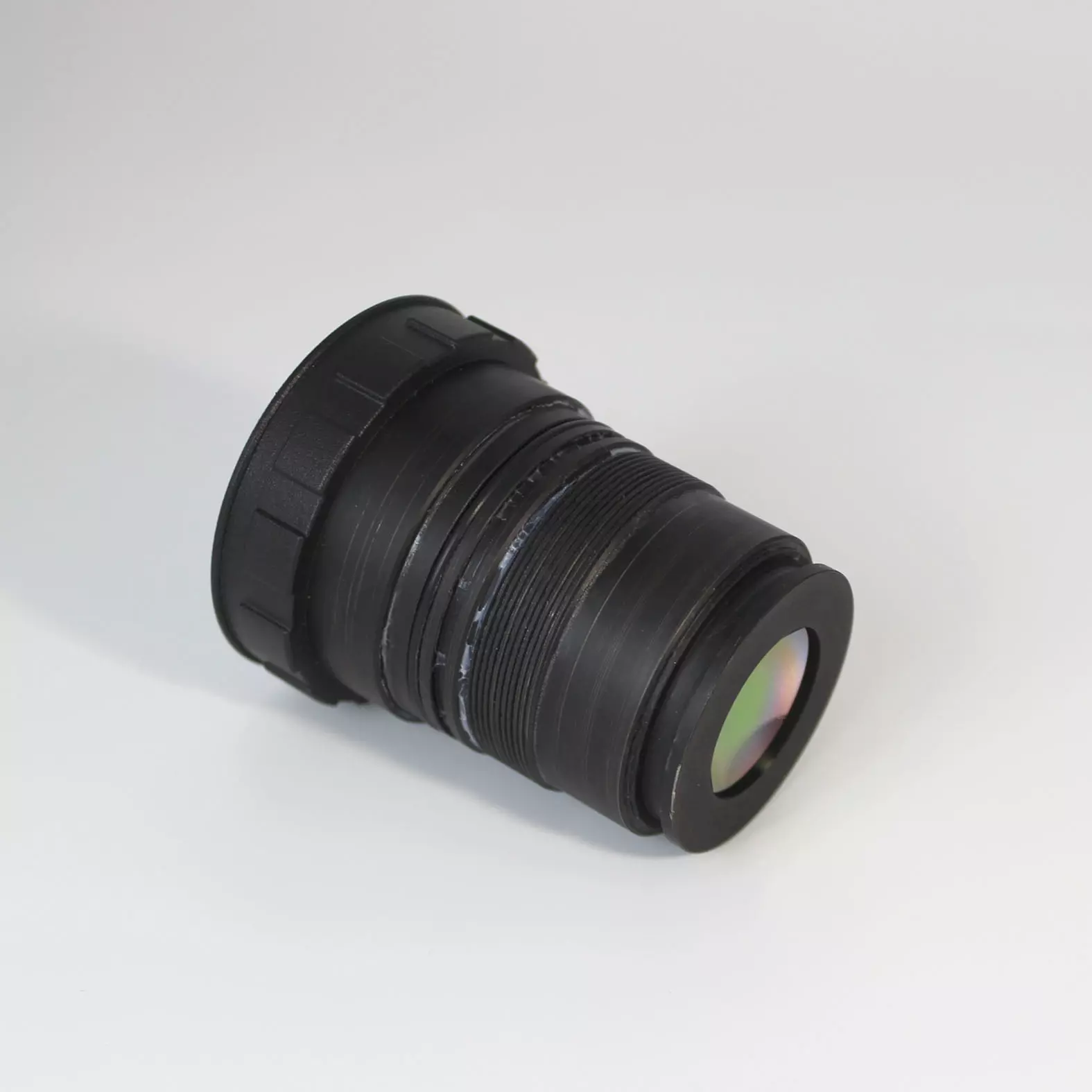High Resolution 12um Infrared Thermal Night Vision Lwir Germanium Imaging Lens
Format Size: 1/3"
Mount: CS
MTF: 5 Mega Pixels
View Angle: 63.80°
Aperture(F No.): 1.6
What are infrared lenses used for?
Infrared Lenses are used to collect, focus, or collimate light in the near-infrared, short-wave infrared, mid-wave infrared, or long-wave infrared spectra.
Why do people use infrared imaging?
Thermal cameras let people see what their eyes can’t: invisible heat radiation emitted or reflected by all objects, regardless of lighting conditions. Some of the greatest benefits of thermal imaging come in the domain of security.
IR Thermal Imaging Optical Infrared Lens pictures
Imaging Lens Specifications
| Specifications | Data |
| Working Waveband | 8μm-12μm |
| Focal Length | 48.5mm |
| F No. | 1.0 |
| View Angle | 14.4°×10.9°with detector |
| Distortion | ≤0.5% |
| Total Weight | 175g |
| Working Temperature | -40℃~55℃ |
| Interface | Customizable |
| Waterproof Grade of Exposed Lens | IP68 |
People also ask
- What is an IR lens?
IR Lenses are optical lenses that use specific substrates or anti-reflection coatings to maximize performance for applications operating above 700nm including thermal imaging, FLIR, or spectroscopy. The infrared spectrum refers to 700 – 16000nm wavelengths. - Is IR the same as night vision?
In conclusion, while both night vision and infrared technologies are used to improve visibility in low-light environments, their underlying concepts and applications differ. Infrared technology detects thermal radiation to create a visible image, whereas night vision amplifies available light to make a visible image - What is better for coyote hunting thermal or night vision?
Thermal allows for much faster follow up shots, while night vision allows you to maintain clear aim points and allows for precision shots. There are tradeoffs to everything in this sport, you just must try and decide what would best fit your need and stand requirements.
Our Ordering Process
Send us your request with detailed specifications
Receive a commercial offer with terms and costs
After your approval, we handle manufacturing, quality control, and shipping
📦 Shipping
3-5 days in EU, from 10 days to USA
💳 Payment methods
Cash, Bank Transfer, Cards (Visa, Mastercard, Amex, Discover) and PayPal
💬 Questions?
Contact us via WhatsApp, phone, live chat or email


